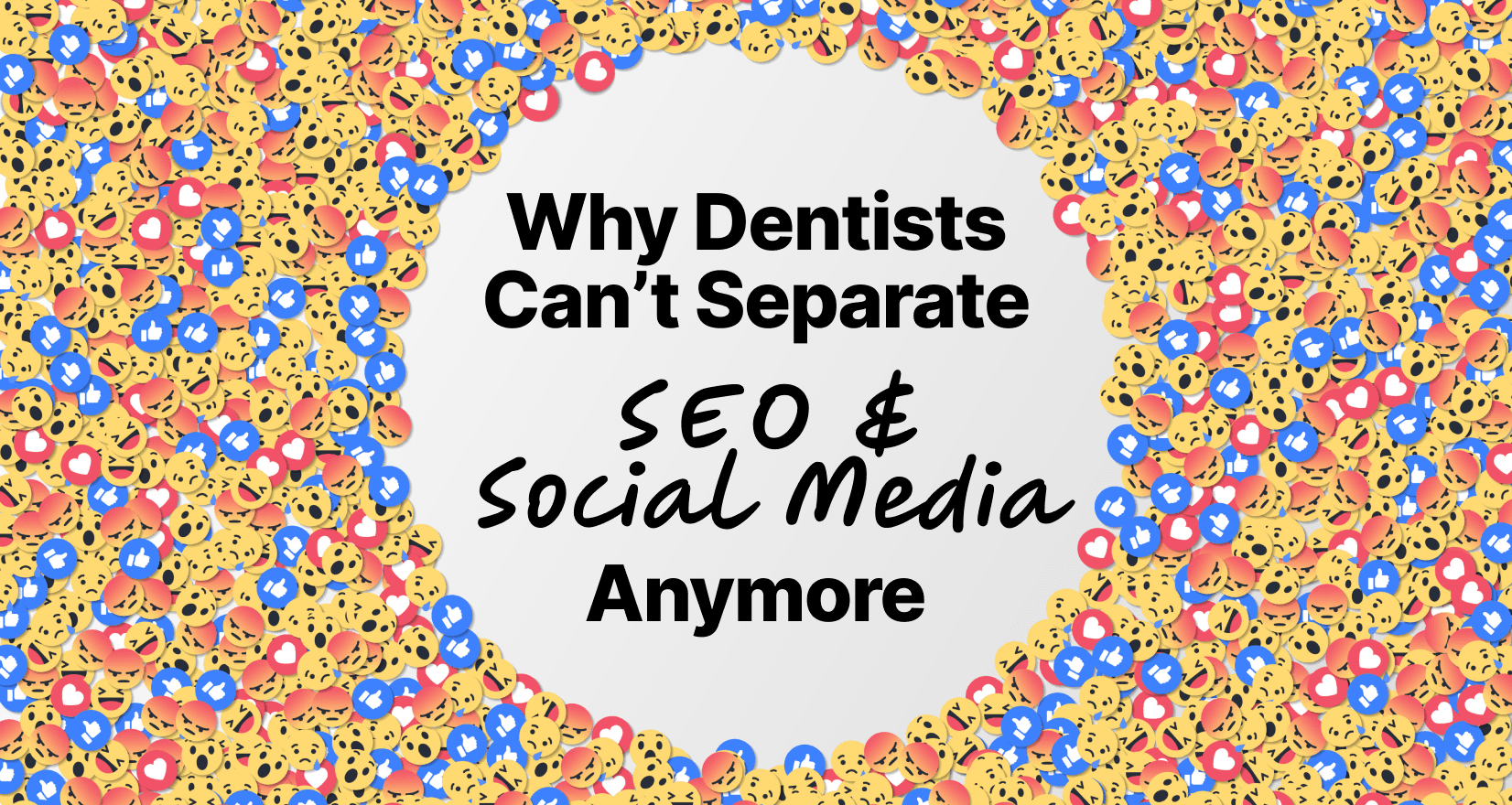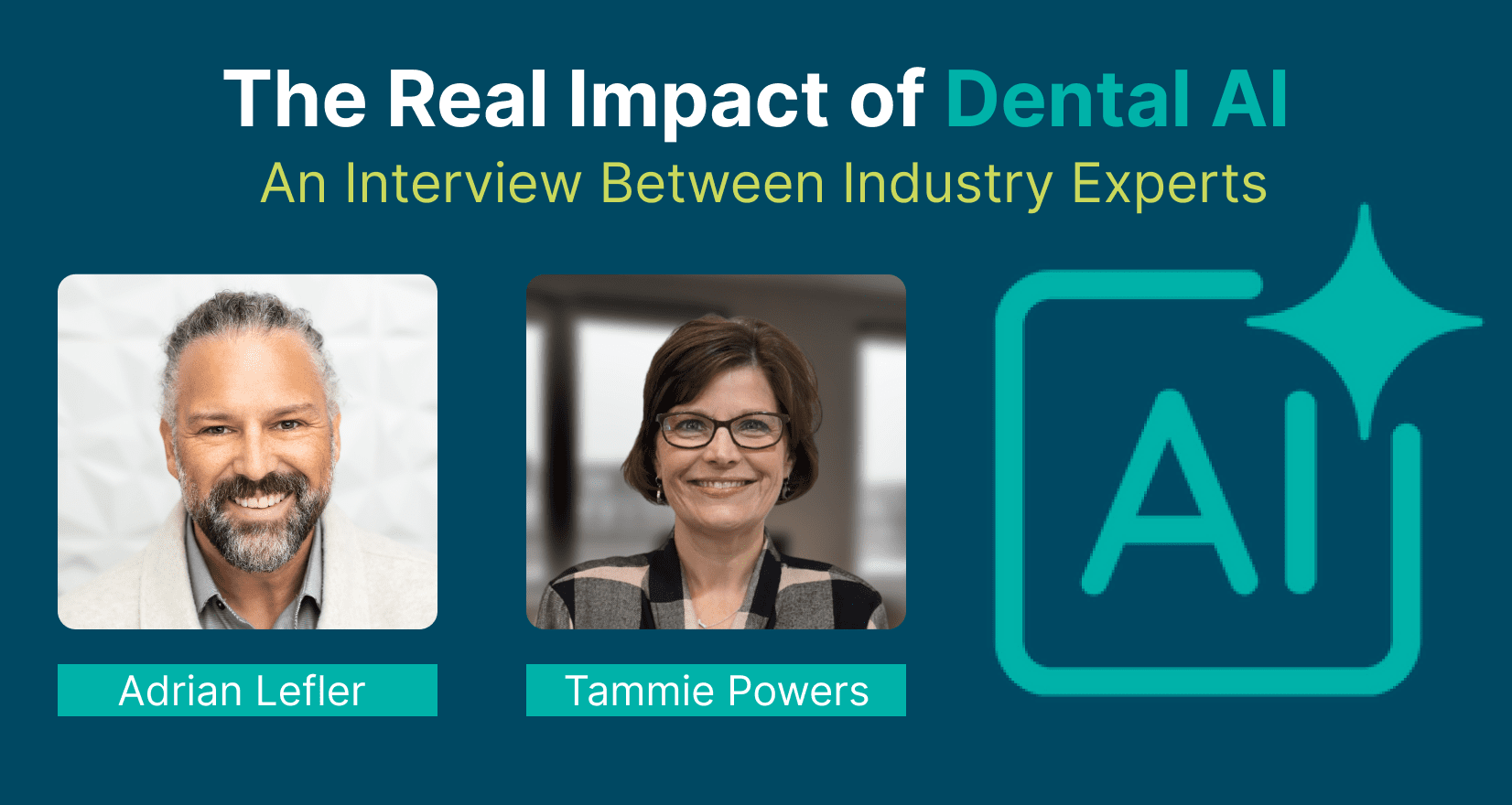My Social Practice Shares AI Insights in New Adams Brown Interview
Remember when the biggest technology challenge in your dental practice was getting your practice management software to sync properly? Well, those days feel quaint compared to what’s happening now. We’re excited to share that Adrian Lefler from My Social Practice recently sat down with Tammie Powers from Adams Brown Technology Specialists for an in-depth conversation about how artificial intelligence is fundamentally reshaping dental practice operations.
This isn’t your typical tech interview filled with buzzwords and theoretical possibilities. Instead, it’s a practical deep dive into how real dental practices are using dental AI tools to capture thousands of dollars in previously missed revenue, streamline their operations, and—here’s the key—free up their teams to focus on what they do best: caring for patients.
About Adams Brown Technology Specialists
Before we dive into the interview highlights, let’s talk about why this conversation matters so much. Adams Brown Technology Specialists is a managed IT and cybersecurity firm based in Wichita, Kansas, serving small-to-medium-sized organizations throughout the central U.S. But here’s what makes them special for dental practices: they actually understand our industry.
They specialize in managed IT services, cybersecurity consulting, network penetration testing, vulnerability scanning, strategic IT planning, and technology consulting—all with a laser focus on industries like dental and optometry practices. Think of them as the tech team that speaks “dentist.” They know that when your practice management system goes down at 2 p.m. on a Tuesday, it’s not just an IT problem—it’s a patient care crisis.
What sets Adams Brown Technology Specialists apart is their personalized approach. They develop strong client relationships and customize solutions for each business’s unique needs. Their mission? To empower organizations by providing robust IT and cybersecurity solutions that safeguard data, promote operational efficiency, and foster business growth while building personal partnerships founded on trust and expertise.
The Reality Check: Why This Interview Matters
Here’s the thing about AI in dentistry right now—there’s a lot of noise, but not enough practical guidance. That’s exactly what makes this interview so valuable. When you combine Adrian’s hands-on experience helping thousands of dental practices with Adams Brown Technology Specialists’ deep understanding of the technical infrastructure that makes AI work securely and effectively, you get something special: actionable insights you can actually implement.
Key Insights That Will Change How You Think About AI
The interview covers some absolutely game-changing territory. Here are the highlights about dental AI and AI receptionists that had us taking notes:
On the Missed Call Crisis: “We are working with a practice in Denver that implemented an AI phone receptionist, and their new patient calls increased with an additional monthly scheduled appointment revenue of over $25,000 because they were not missing phone calls.”
Look, if you’re like most practices, you’re missing about one in three phone calls. That’s not a guess—that’s the industry reality. And when 75% of people hang up rather than leave a voicemail, those missed calls represent real money walking out your door.
On ROI That Actually Matters: “We are seeing practices generate anywhere from an additional $5,000 a month to $75,000 a month of scheduled treatment through AI receptionist tools.”
These aren’t pie-in-the-sky projections. These are real practices seeing real results from AI receptionists, web chat systems, and online scheduling tools. The technology is here, it’s working, and early adopters are reaping the benefits.
On the Search Revolution: “We’re in the middle of a $2 trillion shift in the way in which search happens. The AI overviews are at the top of the page and fewer and fewer people are going to be using the ads and getting their answers inside the AI overviews.”
This one’s huge. If your practice marketing still focuses solely on traditional SEO, you’re fighting yesterday’s battle. The future belongs to practices that understand Generative Engine Optimization (GEO)—creating content that AI systems want to cite as the authoritative answer.
On Getting Past Implementation Fears: “Here’s my tough love moment: you’re already paying for NOT having AI. Every missed call is lost revenue. Every hour spent on repetitive tasks is an hour not spent on patient care or growth.”
This hits at the heart of why so many practices hesitate. It’s not really about the technology—it’s about change. But the cost of not changing is getting higher every day.
Why This Collaboration Creates Something Special
When you bring together My Social Practice’s practical experience with thousands of dental practices and Adams Brown’s technical expertise in healthcare IT, you get insights you can’t find anywhere else. Tammie Powers, as a Dental Practice Advisor with Adams Brown Technology Specialists and certified trainer for major dental practice management software, asked the technical questions that practicing dentists actually need answered.
The conversation moves seamlessly from high-level strategy (how AI is changing patient expectations) to nitty-gritty implementation details (HIPAA compliance, system integration, staff training). It’s the kind of comprehensive resource that helps practices at every stage of their AI journey—from “What is this AI thing?” to “How do we scale our existing AI tools?”
The interview covers everything from basic implementation strategies to advanced topics like Generative Engine Optimization and the future of voice AI in dental practices. What makes it valuable isn’t just the breadth of topics, but the depth of practical, implementable advice.
The Bottom Line: AI Isn’t Coming—It’s Here
This interview drives home a crucial point: AI in dentistry isn’t some future possibility we need to prepare for. It’s happening right now, and practices that embrace these tools are already seeing measurable results in revenue, efficiency, and patient satisfaction.
As the conversation makes clear, “Your practice culture and patient relationships ARE your competitive advantage—AI should amplify them, not dilute them.” The goal isn’t to replace the human touch that makes dental care special. It’s to free up your team to deliver more of that human touch by handling the routine stuff automatically.
Whether you’re a solo practitioner wondering how AI could possibly fit into your workflow or a group practice looking to scale operations without losing the personal touch, this interview provides the roadmap.
Read the Complete Interview
Don’t just take our word for it—dive into the full dental AI conversation on the Adams Brown website. The complete interview goes deeper into each of these topics and includes practical implementation advice you can start using today.
The dental industry is evolving rapidly, and practices that embrace AI solutions now will have a significant competitive advantage. As noted in the interview, “The practices that adapt to GEO now will dominate local search results while others wonder why their phone stopped ringing.”
Frequently Asked Questions
How much does it cost to implement AI receptionists in a dental practice?
Dental AI receptionist solutions typically range from $300 to $1,500 per month, depending on features and call volume. Most small practices find solutions in the $400-$700 range adequate for their needs. But here’s how to think about it—that’s less than what you’re probably losing from missed calls in a single week.
When evaluating costs, calculate the ROI by comparing the monthly fee against the revenue from captured after-hours calls and reduced staff overtime. The practices we work with typically see positive ROI within 2-3 months of implementation. Remember, with approximately one-third of dental practice calls going unanswered, and 75-80% of people no longer leaving voicemails, AI receptionists can capture thousands of dollars in monthly revenue that would otherwise be lost. The question isn’t whether you can afford AI—it’s whether you can afford to keep missing those calls.
What security and HIPAA compliance considerations are important for dental AI systems?
HIPAA compliance isn’t optional—it’s absolutely critical when implementing any dental AI solution that handles patient data. Here’s what you need to verify: vendors must provide signed Business Associate Agreements (BAAs), implement end-to-end encryption for all patient data, maintain audit logs of all interactions, and conduct regular security assessments.
But don’t stop there. Look for SOC 2 Type II compliance as an additional security layer beyond basic HIPAA requirements. Establish clear protocols for what information the AI can and cannot discuss, regularly review AI conversation logs for compliance, and ensure all team members understand the boundaries of AI patient interactions. Here’s the good news: reputable dental AI companies take security seriously because one breach could end their business. Cloud-based AI solutions are often more secure than traditional on-premise systems because they’re constantly updated and monitored by security experts who live and breathe cybersecurity.
How do dental AI receptionists handle emergency calls versus routine appointments?
Today’s dental AI receptionists use sophisticated algorithms to differentiate between routine and urgent calls through keyword recognition and voice analysis. The system identifies distress signals like “severe pain,” “bleeding,” “broken tooth,” or “dental emergency” and responds accordingly.
For emergencies, the AI immediately offers priority appointment slots, provides after-hours contact information, or routes calls directly to on-call staff when necessary. The system can also provide basic emergency care instructions while arranging urgent appointments. For routine calls, the AI handles standard scheduling, insurance questions, and general inquiries with the same natural conversation flow. The key is proper programming with clear escalation paths for various scenarios. Emergency protocols should be regularly updated, and the AI should always err on the side of caution, escalating potentially serious situations to human staff members who can provide appropriate medical guidance and care coordination.
What is Generative Engine Optimization (GEO) and how does it affect dental practice marketing?
Remember when getting your dental website to the top of Google’s search results felt like winning the SEO lottery? Well, GEO is changing the entire game. Generative Engine Optimization is the evolution of SEO for the AI era, specifically designed to optimize content for AI-powered search results like Google’s AI Overviews.
Unlike traditional SEO that focuses on getting users to click through to your website, GEO aims to have your content cited within AI-generated responses that appear at the top of search results. This represents a fundamental shift because Google’s AI now “fans out” across multiple websites, pulls relevant information chunks, and creates comprehensive responses with citations. For dental practices, this means restructuring website content into digestible, authoritative chunks that directly answer specific patient questions. Instead of optimizing entire pages, you need to optimize paragraphs and sections that can stand alone as complete answers. This shift is crucial because fewer people are clicking through to websites when they can get their answers directly from AI overviews—representing a potential $2 trillion change in how search advertising works.
How should dental practices train their staff when implementing AI communication systems?
Successful AI implementation isn’t just about the technology—it’s about the people. You need a comprehensive three-phase training approach that actually works. First, provide technical training on how to manage and monitor the AI system, including understanding dashboards, reviewing conversation logs, and knowing when to intervene.
Second, conduct role redefinition workshops to help staff understand how their positions evolve with AI support. Your receptionist becomes a “Patient Experience Coordinator” who manages AI and handles complex situations that require human touch. Third, establish ongoing coaching on handling escalated situations that AI routes to human team members. But here’s the secret: start with the “why” before the “how.” Explain that AI eliminates the repetitive tasks staff dislike while freeing them for meaningful patient interactions. Have your team help train the AI since they understand patient questions better than anyone. Celebrate wins when AI handles calls perfectly, and treat AI implementation like hiring a new team member with proper onboarding and clear expectations. Practices investing 8-10 hours in initial training typically see 50% faster adoption rates and better patient satisfaction scores.
About the Author: Megan Nielsen is an SEO strategist and the Grand Overlord of copywriting at My Social Practice. My Social Practice is a dental marketing company that offers a full suite of dental marketing services to thousands of dental practices throughout the United States and Canada.
![[Byte Sized Podcast Ep. 23] Frictionless Online Dental Scheduling: Why Your Practice Needs It Now Feat. Colin Ambler - dental AI - My Social Practice - Social Media Marketing for Dental & Dental Specialty Practices online dental scheduling](https://mysocialpractice.com/wp-content/uploads/2025/12/byte-sized_ep23.png)





![[Byte Sized Podcast Ep. 23] Frictionless Online Dental Scheduling: Why Your Practice Needs It Now Feat. Colin Ambler - dental AI - My Social Practice - Social Media Marketing for Dental & Dental Specialty Practices online dental scheduling](https://mysocialpractice.com/wp-content/uploads/2025/12/byte-sized_ep23-100x100.png)



